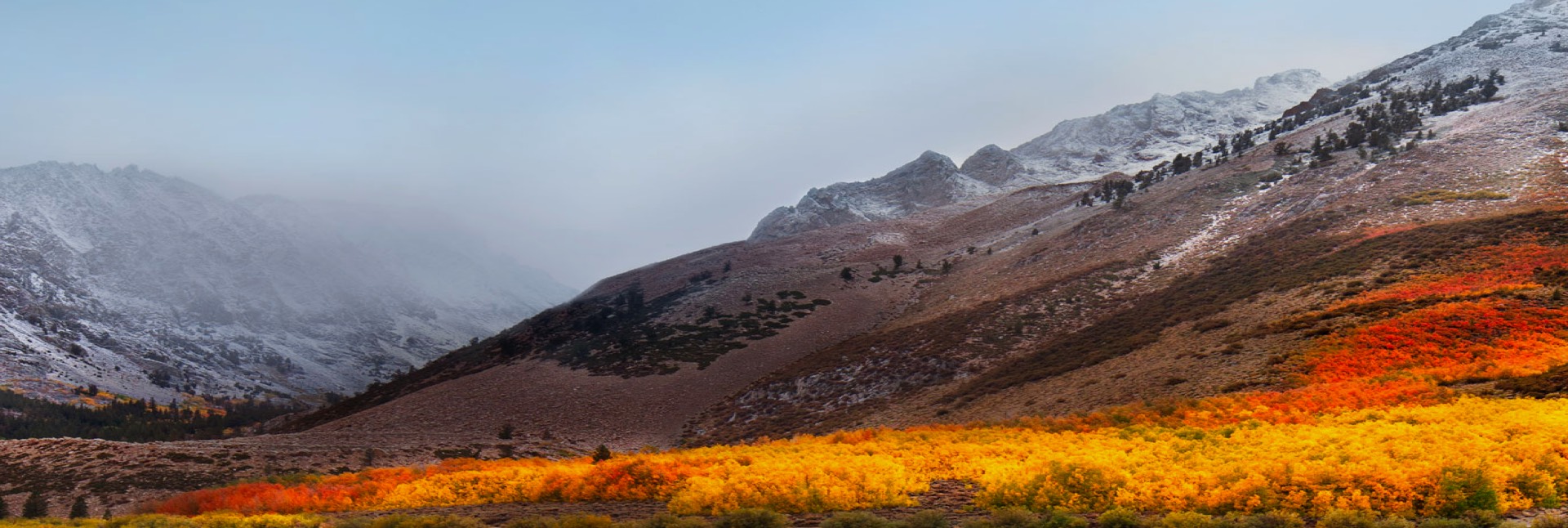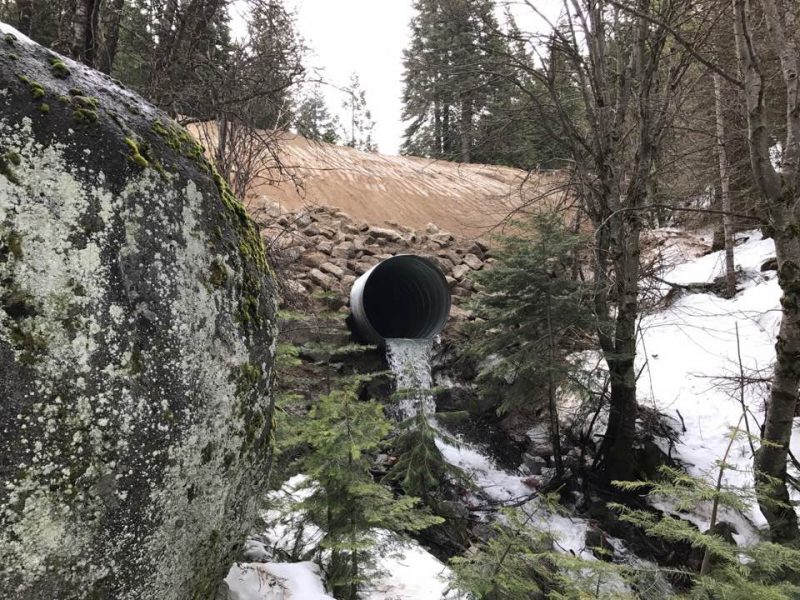If you have macOS Sierra (the current macOS version), you can upgrade straight to High Sierra without doing any other software installations. If you are running Lion (version 10.7.5), Mountain Lion, Mavericks, Yosemite, or El Capitan, you can upgrade directly from one of those versions to Sierra. Supplementary Information for Yosemite Yosemite can be installed on all computer but ONLY Mac Pros WITH AN UPGRADED GRAPHICS CARD can use graphics acceleration as of now! Requirements for MacPostFactor to work A Mac with Core 2 Duo or Xeon Processor. OS X 10.7 or later 2GB RAM at least At least 15GB of HDD space (8GB for USB). MacOS 10.13 High Sierra was released to the public on September 25, 2017. Like OS X El Capitan and OS X Mountain Lion, High Sierra is a refinement-based update having very few new features visible to the user, including updates to Safari, Photos, and Mail, among other changes.
I received another customer question on a third party website, where I earn supplemental income answering computer and technology related questions. This is the customers question:
I have a MacBook Pro that was purchased in 2012. It current operating system is OS X 10.10.5. I installed Turbo Tax 2017 and I got a message saying that I must install OSX10.11 to use this product.
How do I download OSX10.11? How much will this cost? Can I do this online?
This individual installed TurboTax 2017. This program will not work unless their MacBook Pro is upgraded to OS X 10.11, which is also known as El Capitan. Newer versions of Turbotax, for example 2017 versions, now require MAC OS 10.11.
This is known as El Capitan. In order to upgrade your MAC operating system, you must now have an Apple ID. This customer could NOT install El Capitan.
However, they were able to install High Sierra and thus I have included instructions for upgrading MAC OS X Yosemite to High Sierra. If you have installed High Sierra before, then all you have to do is browse to the 'Apple Store' on your Macintosh. You need to login with your Apple ID.
Click on the 'Purchases' tab. A list of all your previous purchases will populate. Apple considers operating system upgrades as purchases. Select 'High Sierra' and then click on 'Download'.
Depending on the speed of your Internet connection, this download can take possibly hours to complete. If you have NOT installed Apple MAC OS 10.13 High Sierra before, you will need to download High Sierra from this alternative Apple Store download link. You will need to access this link from your Macintosh computer.
Once High Sierra completely downloads, then the installation will open. You will need to enter your MAC password and accept some terms of conditions. Keep clicking 'Next' until you come across a 'Restart' window.
Click on 'Restart' and your Macintosh will reboot and begun upgrading from Apple MAC OS 10.10.5 Yosemite to Apple MAC OS 10.13 High Sierra. You can click on the Apple icon and select 'About this MAC' to verify your operating system. You should see MAC OS 10.11 populated or a different version.
Here is a bonus tip. Now that you have successfully upgraded your Macintosh to High Sierra, you can upgrade other MACs to High Sierra by just logging into the Apple store with your Apple ID and clicking on 'Purchases' tab. You can then download High Sierra from this tab.
Finally, if you are having problems upgrading to High Sierra, it might be because your Apple Macintosh hardware is NOT compatible.
The classic OS X 10.12, or rather macOS upgrade, introduced tons of features anyone would still want on their Mac. Why? Because, it's well-tested and secure. Now we'll take a quick look at the legendary macOS Sierra upgrade. (In case you want to upgrade your Mac to macOS 10.13 High Sierra, check out this guide.)
Interestingly, it first brought Siri to your Mac. This is great news for everyone who's already used to her help on iOS. Then, there's Watch unlocking for Mac, there's one-click Apple Pay, tabs in apps, and cross-device copypasting. Just to name a few.
So, if you were on the fence about upgrading to Sierra, and in fact, any newer OS, go right ahead. Your Mac deserves a refreshment.
How to upgrade macOS: Sierra 10.12 compatibility list
As with the previous versions, macOS Sierra is available for a limited list of Mac models.
Here are the models of Macs that are compatible with macOS 10.12 and can upgrade to Sierra:
| MacBook Pro | MacBook Air | Mac mini |
| Mid 2010 or newer | Late 2010 or newer | Mid 2010 or newer |
| Mac Pro® | MacBook | iMac |
| Mid 2010 or newer | Late 2009 or newer | Late 2009 or newer |
Does order matter when you upgrade macOS?
If your current operating system is OS X Lion (10.7), you can skip a few versions, and upgrade directly to macOS High Sierra. To upgrade to Sierra from, say, Mavericks, you'll have to consequently upgrade to Yosemite and then to El Capitan first.
Check Your macOS for Sierra Compatibility
These OS versions can upgrade to Sierra:
- OS X Mountain Lion v10.8
- OS X Mavericks v10.9
- OS X Yosemite v10.10
- OS X El Capitan v10.11
Here's how to find out which OS version you're running now:
- Click Apple icon in the top left corner.
- Choose About this Mac.
- There you have it, in capital letters.
Memory (RAM): 2 GB (preferably 4 GB)
Sierra is pretty lightweight, so you only need 2 GB of RAM to upgrade. Cool, eh?
Disk space: 8 GB of free space on drive.
In the same About this Mac menu select 'Storage' tab. In front of the multi-colored bar, you will see the phrase, 'X.XX GB free out of XX.XX GB.' If you don't have at least 8 GB of free space, you should delete some old files.
Before you update macOS, don't forget to:
Clean up your Mac
This is essential if you want a fast and effortless update, and glitchless work of your new macOS. And it's also pretty easy. To give your Mac a cleanup, you need to get rid of system junk, uninstall extra apps, and clean some old caches. If that sounds like a lot of work, you can get a Mac cleaner like CleanMyMac for the job.
How to update your Mac: Clean it up first
- Launch it.
- Hit Scan to find all the extra files you can delete.
- Press Run.
As you can see, I have 8.56 GB worth of caches, obsolete language files, broken downloads. You'll feel great getting rid of them.
That will give your Mac a basic system cleanup, but CleanMyMac is going to come in handy after the update as well. It monitors your Mac's health, helps you speed up the system and remove unnecessary apps (Trashing doesn't fully uninstall apps, by the way).
Back up your Mac
This is basic common sense before any Mac software update you'd like to undertake. Why? Well, because sometimes updates happen less smoothly than you'd like them to. To make sure you have all your information and files saved up neatly, you need a backup. To back up your Mac, you need to activate Time Machine.
- Open your Applications folder.
- Choose Time Machine.
- 'Select Backup Disk…'
Note: You may need to first choose to 'Set Up Time Machine.' - Choose where you'd like to store your backup.
- Both an external drive or an Airport Time Capsule fit.
- Switch the toggle on the left, from 'OFF' to 'ON.' Right beneath the name of your storage device, you'll see 'Oldest backup,' 'Latest backup,' and 'Next backup' — Your backup will begin within 5 minutes. To speed it up, click the arrow clock icon next to the Date & Time at the top-right of the menu bar and select 'Back Up Now.'
How to download macOS Sierra (or newer macOS) and install it
macOS Sierra is increasingly becoming a relic. Since 2020, the newest available macOS version is Big Sur. But it all comes down to hardware. Your Mac can only upgrade to the latest version its hardware can support. If your Mac is from around 2012 it can update as high up as to macOS Catalina. If your Mac is from 2010 or older, its limit is macOS High Sierra.
To download any new macOS and install it you'll need to do the next:
1. Open System Preferences... in the Apple menu.
2. Click on Software Updates.
On top of the list you'll see the latest macOS version your Mac can download. In our case, it's macOS Big Sur.
Another way to do it is via the Mac App Store.
- Open App Store.
- Click the Updates tab.
- You'll see macOS updates available for your Mac.
- Click Update.
Wait for macOS download and installation. Your Mac will restart when it's done.
Now you have a new OS.
For historic interest, this is how macOS Sierra looked back then when it was still available in the Mac App Store. Now, it can't be found there anymore.
Download macOS installers directly from Apple
For users of past operating systems Apple created a handy a list of macOS installers. They go as far back as to macOS Yosemite. The first 3 of them will open and start the update process automatically.


Can Yosemite Be Upgraded To Sierra Os
- macOS High Sierra 10.13
The 3 following installers will download macOS as a disk image (.dmg) After you unpack it, the macOS updater app will appear in your Applications.
Can Yosemite Be Upgraded To Sierra National Park
We hope this guide has been of use, and don't forget to clean up your Mac and back it up before you get the classic macOS! Cheers.
